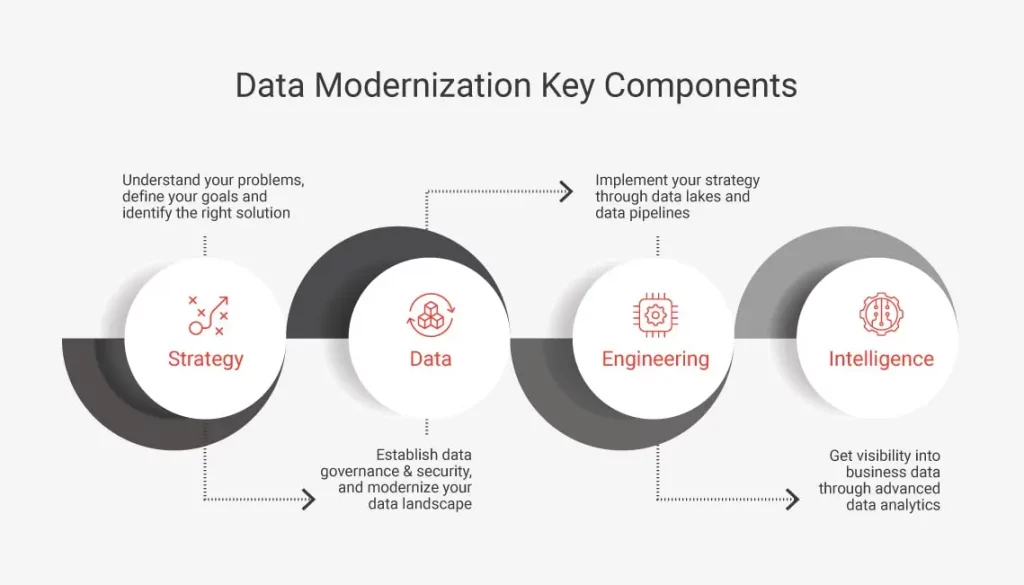Data Modernization is at the forefront of every organization’s digital transformation initiative. While the transformation itself could be of the business model and processes or the organization’s culture, no real change can occur until data is modernized and made functional.
Imagine trying to create a flexible and open work culture, but your employees are still burdened by having to work with complex and outdated systems and data. Or you want to try and explore other business models and revamp your processes, but you have little to no insight into what your organization is currently doing. Therefore, it is inevitable that change, or digital transformation, in this case, must happen from all fronts for it to yield positive results.
The following are the key components required for the success of a data modernization project:
- Strategy
- Data
- Engineering
- Intelligence
Strategize Your Vision
To flawlessly execute a task, one requires a failproof way of doing it. Strategy is the first key component in every organization’s Data Modernization Project.
First, analyze your current applications and their architecture. Understand your current data processes and the existing bottlenecks in your system. When you do this, you will arrive at a problem statement encompassing all the issues with your current system. Then identify your immediate and future business goals. Once you’ve set your goals, it is time to create a plan to solve your problems and provide a solution to meet all your requirements. Finally, ensure you invest in the right technology and people who can perfectly execute your plan.
Focus on Data and Data Platform
What is an essential component of data modernization? Hint: It’s there in the name.
Data is undoubtedly the focal point of data modernization.
When you have succeeded at data modernization, your data will be completely integrated, be immediately available to anyone who needs it, adhere to security protocols, retain high quality, and provide valuable insights.
Here’s how you can ensure all the above:
- Choose the right platform to drive data transformation
- Modernize your data landscape
- Setup a data lake as a central repository for all data
- Establish data governance and ensure data security
- Build intelligent systems to harness the power of data
Create Value Through Intelligence
I have migrated and modernized my data; What next?
To produce business value, you should convert your data into an intelligent business aid.
Therefore, ‘Intelligence’ is the final but critical component of data modernization, generating real-time business insights that drive intelligent decision-making.
Once your data is transformed into a viable product, build intelligent dashboards that show real-time information. Customize the analytics to deliver insights that align with your business requirements and help improve how your organization operates. Ensure you democratize data and create visibility into data for every stakeholder. Leverage existing AI tools in the market or build one on your own to accelerate processing and obtain advanced insights. Finally, incorporate automation wherever possible.
Summary
Here’s a quick look into the key components of data modernization and the focus points for each component:

Strategy: Understand your problems, define your goals and identify the right solution
Data: Establish data governance and security, and modernize your data landscape
Engineering: Implement your strategy through data lakes and data pipelines.
Intelligence: Get visibility into business data through advanced data analytics










